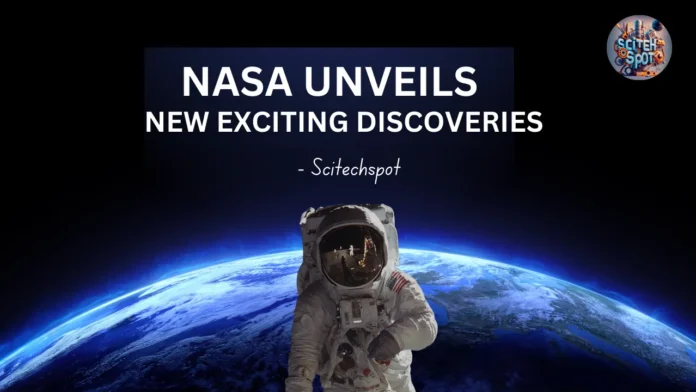The recent meeting organized by the American Astronomical Society (AAS) showcased unprecedented discoveries and advancements in the field of astronomy. NASA unveils new exciting discoveries. This made headlines during the event when it presented its findings. The gathering brought together leading astronomers, astrophysicists and space scientists and provided a platform for NASA to unveil its achievements and shed light on the mysteries of the universe.
Among NASA’s interesting revelations was the identification of an exoplanet located within the region of its star. The discovery has generated interest among scientists and the general public because of its implications for extraterrestrial life beyond our solar system. This exoplanet, named Kepler 452b, shares similarities with Earth in terms of size and distance from its star making it a prime one for exploration and research.
Additionally, NASA also presented evidence indicating water vapour is present in the atmospheres of exoplanets within the star system. The discovery has implications for our understanding of the formation and raises questions about its ability to survive beyond our celestial neighbourhood. The presence of water vapour on an exoplanet suggests the possibility of water – a vital ingredient for life as we know it – further boosting our quest to identify potentially habitable worlds beyond Earth. gives.
In addition to these exoplanet discoveries, NASA also demonstrated progress in its missions within our solar system. The agency provided an update on the Mars Perseverance rover, which is diligently exploring the surface of Mars and conducting experiments to uncover the planet’s history and habitability. The latest discoveries from the rovers’ analysis of rock samples have provided insight into the planet’s ancient climate and the existence of organic compounds. These findings lay the foundation for human exploration on Mars.
NASA also highlighted the accomplishment of deploying the James Webb Space Telescope, an observatory designed to delve deeper into the vastness of space and reveal the secrets of the early universe. The telescope’s cutting-edge capabilities are set to redefine our understanding of the stellar formation of galaxies and the complex cosmic networks that shape our universe. The data collected by this telescope is expected to provide insights into the universe’s origin and how galaxies have evolved.
Additionally, NASA emphasized its dedication to advancing space exploration and scientific research through efforts with partners. By highlighting its partnerships with nations and organizations involved in space efforts, NASA underscores the importance of collaboration in expanding humanity’s access to space and fostering a deeper understanding of our ever-expanding universe.
The AAS meeting stands as a testament to the dedication and ingenious work demonstrated by the community, leading NASA to advance beyond our current understanding of cosmic phenomena. These latest discoveries and advances have rekindled interest in exploring space and finding answers to complex questions about our vast universe.
Looking ahead, NASA’s ongoing missions and upcoming ventures promise to uncover even more awe-inspiring mysteries about our universe.
NASA’s ongoing efforts, ranging from exoplanet investigations to exploration of celestial bodies, serve as a constant source of inspiration igniting the spirit of awe and curiosity within us. These are some new exciting discoveries unveiled by NASA. These discoveries increase our understanding of our vast universe.
Finally, NASA’s recent update shared at the meeting of the American Astronomical Society highlights the agencies’ role in expanding our understanding of the universe and solving its mysteries. Through each discovery and technological advancement, NASA reaffirms its dedication to pushing the boundaries of space exploration and fostering appreciation for the wonders of outer space.



Thanks for sharing. I read many of your blog posts, cool, your blog is very good.